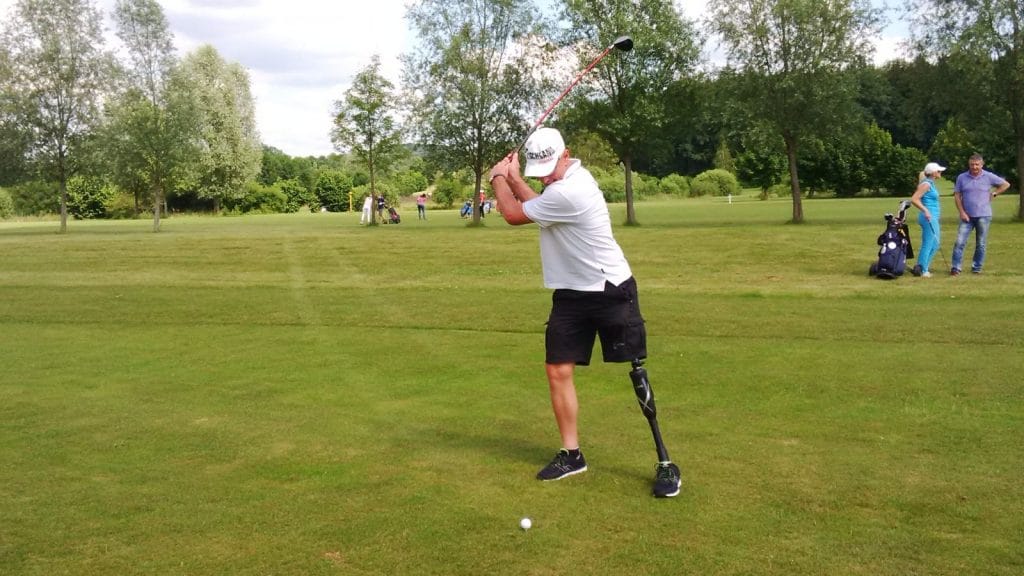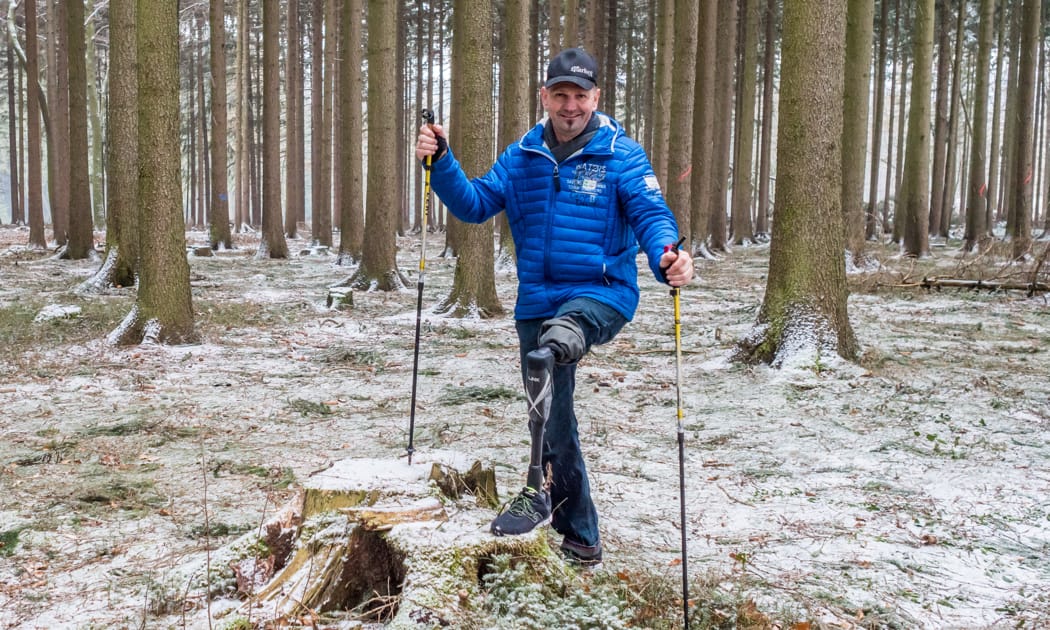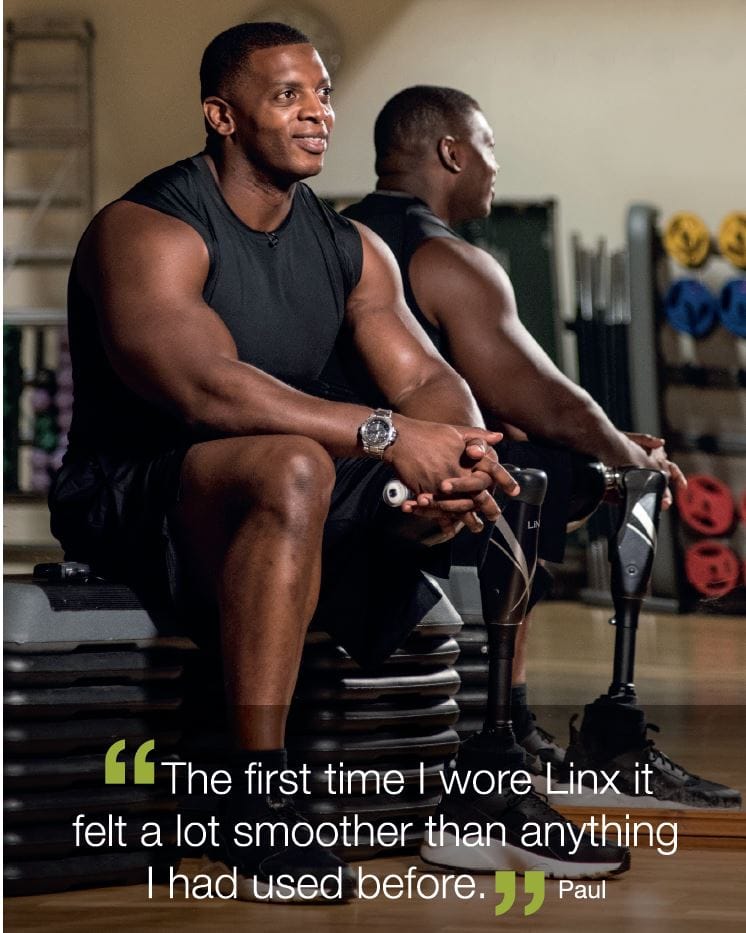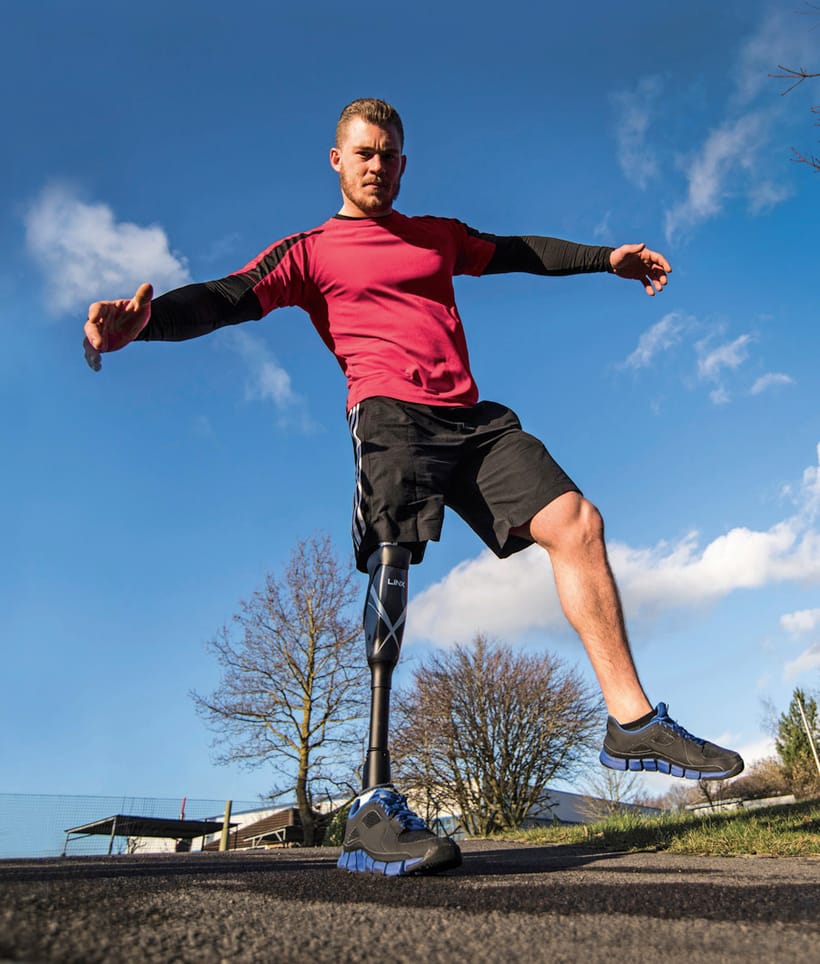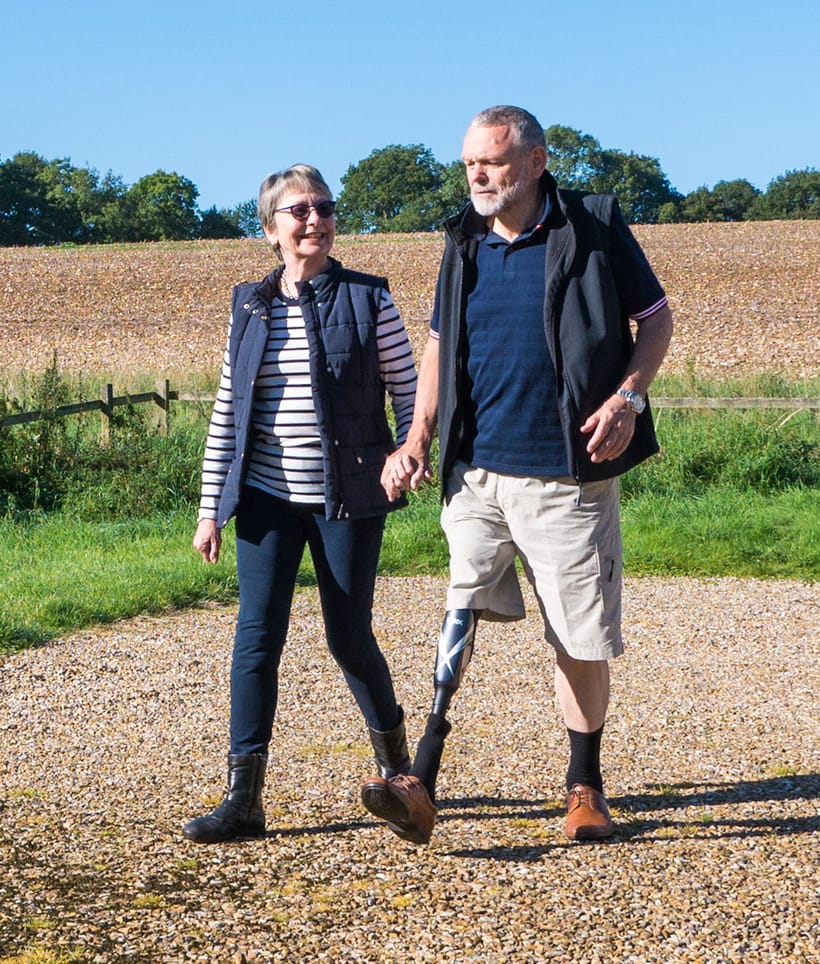Rowing, golfing, climbing, skiing or mountain biking – there is hardly anything Matthias Uhlig does not do. For many years, the agile Augustusburger (Saxony) organised leisure activities for people with disabilities, ranging from table tennis and badminton to cycling or climbing tours. However, this is not a matter of course, he notes, because many of these activities were not possible twenty years ago.
He himself has been wearing a thigh prosthesis for 36 years (due to an accident) and during this time has already been able to experience some decisive development steps in prosthesis care in a very practical way on his own leg. One of these major developments is the Linx system built into his prosthesis. Although Matthias Uhlig had always made good progress with his supply solutions before, his back and hips often had to work hard to compensate for the shocks of the slightly uneven movements. For a long time, he suffered from pain in his sacroiliac joint and lumbar vertebrae.
This was mainly due to the lack of communication between the microprocessor-controlled knee joint and the electronic prosthetic foot, as he now knows. The balancing function between these two is usually performed by the ankle in a healthy leg – but this part has so far been missing from the care solutions available on the market. The first fully integrated microprocessor-controlled leg prosthesis system, Linx, which Matthias Uhlig has been wearing for several years, also takes over this task of the ankle joint, because information is constantly exchanged between the knee and the foot. In this way, the movement sequences are constantly adapted to the current environmental conditions; the effect is particularly noticeable when walking uphill and downhill, when additional energy is used to support or decelerate, or when walking on uneven terrain, such as gravel, as the prosthesis is permanently aligned with the conditions.
This increase in safety and comfort is clearly noticeable for Matthias Uhlig: "I walk much more relaxed and my stride length has equalized. The overall motion picture is no longer as eccentric as it used to be." Due to the great freedom of movement in the articulated foot – from the heel strike to the toe kick it is 9 to 10 degrees – running is now also comfortable for him. The conventional variants with carbon springs, on the other hand, have only a low joint function. Even standing for long periods of time is no longer a problem with the system's innovative locking function, whereas previously he had always avoided a standing phase as much as possible. Thus, Matthias uses the prosthesis side much more. Finding a good mobility solution for one's own handicap is something he has also dedicated himself to as a patient caregiver at the medical supply store Reha-aktiv. Because a disability is no reason to bury yourself in your own four walls, he is quite sure of that.
The article was published in the magazine BARRIEREFREI.
